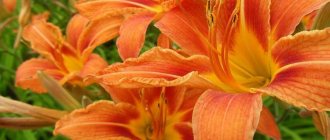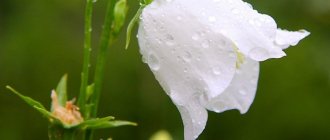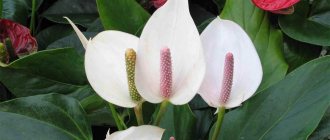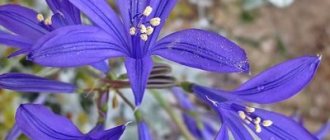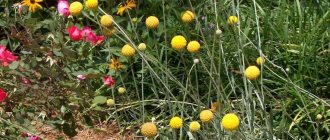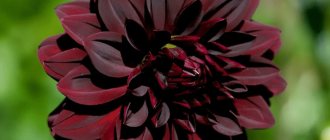Roses are royal marvelous flowers for all times. There are rare flowers that look like roses, they are also beautiful and charming. When you see them, an association with a rose immediately arises, but, of course, there are differences, there are no thorns - protection and symbol that belong only to one queen - the rose.
Similar flowers are very similar to roses and are attractive to gardeners: peonies, kalanchoe, gardenia, primrose, ranunculus, geranium, double balsam, adenium, begonia, eustoma. They have no thorns and in their own way they are all beautiful and charming.
Ranunculus - a flower similar to a rose
The Asian buttercup, with its various shades, became known for the first time in eastern countries since the 16th century. The beautiful flower is a worthy competitor among some garden favorites. It is similar to peony and rose, resists many diseases, and is easy to care for.
Depending on the variety, the color can be pink, white, crimson, red, yellow, orange . When blooming, the flowers reach up to 7 cm in diameter, are very similar to small roses, and form several buds when they reach a height of 30-35 cm.
The flowers last a long time, do not fade, and after cutting they combine in an original way with other flowers in bouquets. Ranunculus can decorate any garden; it grows well at home in pots, but is heat-loving and quickly fades in the cold. Seeds or bulbs directly into the ground are suitable for planting.
In landscape design
Ranunculus is often grown in flower beds or along garden paths. Can be used as an independent plant or in combination with other crops. Looks good among evergreen shrubs.
5 useful tips on how to grow strong ageratum seedlings so as not to be left without beauty on your site
Also, buttercup will be an ideal option for decorating a balcony or veranda. Potted buttercups can be placed in gazebos.
Hibiscus - Chinese rose
Hibiscus, or Chinese rose, looks very much like a rose. This plant is not only an indoor plant, but there are also hybrids that are preferably grown in the garden. The flower is perennial and forms luxurious bushes with buds in the second year after planting. It blooms like an exotic plant, it is impossible to look without admiration.
The homeland of hibiscus is Asia, but today the plant grows beautifully in all countries of the world. The Chinese rose is compared to a symbol of beauty, sophistication, and femininity.
The flower has 5 petals, which corresponds to the 5 commandments of Islam. Hybrids have fully adapted to our conditions and climate. They grow in bushes, like roses, and are not afraid of frost, but they need to be covered for the winter, otherwise the roots and leaves may freeze.
There are many buds blooming on each branch, and the flowering duration is only 1 day, but new buds immediately bloom, which makes the flowering simply continuous, until the middle - end of October.
Hibiscus of rich pink shades grows up to 2 meters in height, the diameter of the flowers is 23-25 cm. The bushes of this plant are a wonderful decoration for any garden.
Pests
Buttercup is resistant to pests. However, in some cases insects appear, which in a short time lead to the death of the flower bed
| Pest | How to identify | Struggle |
| Aphid | A small insect feeds on the sap of the plant. In order to identify the problem in a timely manner, it is necessary to carefully examine the leaves and young shoots. | To combat aphids, you can use a solution of household mala. To do this, dissolve 100 grams of soap in 5 liters. |
| Nematodes | Small compactions that most often form in the root area. It is difficult to identify pests in a timely manner. | Root nematodes are difficult to treat, so the buttercup is removed along with the roots. The soil where the flower grew must be treated with boiling water. |
| Cabbage butterflies | Small insects that lay larvae. The larvae damage the shoots and cause the plant to die. | To combat the pest, it is necessary to use the drug Aktara. |
| Spider mite | The pest manifests itself as small compactions on shoots and leaves. When attacked by insects, the buds may fall off. Another symptom of the pest is small threads of cobwebs between the leaves. | To combat the pest, it is recommended to use the drug Actellik |
| Thrips | Insects that feed on plant sap. They appear as compactions, which most often form on the leaves. When the buttercup is infected with thrips, the buds dry out before they have time to open. | To eliminate the problem, it is necessary to treat the bushes with drugs such as Iskra, Akarin. |
You can identify pests in a timely manner if you regularly inspect the ranunculus bush. At the first symptoms of harmful insects, appropriate control measures must be taken. If neglected, chemicals may not be effective, and the crop will need to be uprooted.
Eustoma
Eustoma is a worthy competitor to the Queen Rose. The touching, delicate flower is loved by gardeners. The plant's homeland is South America, but today there are many hybrids. Varieties with cream, red, white, apricot, and lilac petals are known.
The flowers smell like roses and are easy to confuse. The flower has a wide geographical distribution, so there are several names: Irish eustoma, Japanese, French.
If you properly care for the plant, the inflorescences will be terry, juicy and luxurious. Flowers reproduce by seeds through. There are tall varieties 60-90 cm - hybrids, they are branched like a bush, and also dwarf. Six months after sowing, you can admire the luxurious, blooming inflorescences.
Flowers grow both indoors and outdoors. The composition of the soil is sand and peat, but you need to sow at a temperature not lower than 23 degrees, until the first shoots appear you need to keep it under film. After the seedlings have become stronger, the seedlings are picked.
After the true third leaf appears, it is transplanted into a flowerbed if necessary. The plant loves light; when grown indoors in the summer, it should be taken out to the balcony or outside more often.
Flowers are like roses, but not roses - what's the difference?
Among the many flowers, there will always be those that repeat certain features of other plants, but belong to a completely different species. Eustomas are flowers similar to roses, but not related to them in the botanical genus. How do these largely similar plants differ?
- The homeland of eustomas is considered to be the region in Central America, covering the southern part of the United States and northern Mexico, so the flower in these parts is often called the Texas bell. Roses were brought from southeast Asia.
- The natural colors of eustoma are various shades of blue and white. Today, the elegant flower delights us with a wide range of colors: all shades of lavender, red, purple, white, blue, pink, green. In addition, eustomas of various pastel shades are grown, as well as the famous edged varieties, which have white petals with a bright colored edge. The color scheme of roses lacks pure blue and shades of blue.
- Two outwardly similar flowers have completely different characters: the rose is majestic and unapproachable, the eustoma is tender and delicate, devoid of sharp thorns by nature. The stem of lisianthus is more delicate, there are no woody areas on it.
- Eustoma has a barely noticeable, practically absent aroma, due to which bouquets with it can be given to those who cannot stand rich floral odors.
- Unlike roses, it is not possible to grow a flower from an eustoma cutting - it reproduces only by seeds. But because lisianthus naturally grows in dry areas, its hardiness extends to specially grown flowers.
In addition, there are many scientific botanical differences regarding the structure, morphology, and growing conditions of these two plants.
Begonia
Begonia is one of the most common house flowers, a competitor to roses and a favorite of gardeners. The plants bloom well and are easy to care for. Begonia is native to Africa and South America; there are more than 900 species.
The sizes are different: miniature and giant bushy growing up to the ceiling in the room. Caring for begonias is easy. The main thing is that the soil is moist and water does not stagnate. To do this, it is necessary to make drainage.
New types of geraniums
Geranium does not have thorns, but is very similar to a rose. Grows beautifully on a balcony, window sill, flower bed. It is believed that by planting a flower near the house, there will be no discord and bad weather in the family, and white inflorescences will increase the fertility of the family. Geranium is not only beautiful, but also creates a favorable microclimate in the house.
The birthplace of the flower is Africa. More than 280 species are known. Double inflorescences with many petals are comparable to rosebuds; they do not fully open. Geraniums should not be watered abundantly and kept in direct sunlight, but the soil should not be allowed to dry out.
To allow air to penetrate, it needs to be loosened more often and fed with fertilizers. It is advisable to water with warm water.
Terry balsam
People call balsam Vanka wet. Flowers, like roses, are very similar to them. Plants of short stature are perfect for landscaping the area; they bloom profusely and grow on windowsills even in winter. Can be planted by seeds or cuttings in open ground. Thanks to the varied shades, planting several varieties in one flower bed can create real floral splendor.
There is no need to water frequently, but it is necessary to loosen periodically. There should be no drying out or compaction of the soil. Plants love shade and grow well under trees, in flower beds, as well as in vases, pots, baskets, and containers. Flowering is generous. There is no need to oversaturate the soil with moisture, otherwise the stems will become brittle and brittle.
Gardenia
The aroma of gardenia resembles jasmine, and in appearance, of course, a rose. The plant is majestic, but loves warmth, affection and care. Depending on the species, it grows dwarf or tall in size. The flowers are arranged in pairs, but are quite large, cream and white in shades with dark green shiny leaves.
Flowering occurs in mid-summer and until October. Grown small bushes up to 0.5 meters in height will become a real decoration of any interior. The bushes do not tolerate the scorching rays of the sun, but a lack of light will lead to stunted growth.
It is better to place the flowerpot on the southwest side. If there is insufficient lighting, you need to place a fluorescent lamp nearby.
The flower should be watered regularly, but moderately, 1-2 times a month with the addition of citric acid. The soil should be slightly acidic. It is not recommended to spray flowers.
Adenium terry
Adenium is considered a rose that grows in the desert. Flowers can decorate any greenhouse or garden. This is a shrubby succulent, the leaves are huge, olive in color, and the flowers are elegant, with many different colors: white, red, with shimmer.
The appearance of buds begins in early June and continues until autumn. They delight the eye with their luxury and splendor. The homeland of adenium is Central and South Africa.
When planted in the ground, the stems can reach up to 10 meters. At home, the height does not exceed 35-40 cm. Adenium blooms marvelously, many owners try to grow it in their garden plots, but the juice is poisonous, the plants must be handled with care.
The plant is adapted to dry climates. The leaves absorb water and can last for a long time without any recharge. After watering, the plant begins to grow rapidly and bloom.
.
In summer it’s good to keep it outside; fresh air speeds up the development process, but you don’t need to water it often. The leaves can be lightly sprayed, but water should not get on the inflorescences.
Diseases
Ranunculus, when properly cared for, is rarely susceptible to disease. However, problems may arise.
| Disease | Symptoms | Treatment |
| Root rot | Occurs if the plant is watered too often. The first symptoms of the disease are yellowing of leaves and lethargy of shoots. | For treatment, it is necessary to reduce watering and dry the soil. If the flower is grown in a pot, it must be transplanted into new soil. |
| Powdery mildew | White coating on the leaves. The affected areas begin to dry out. | For treatment, a light solution of Bordeaux mixture or the drug Fitosporin is used. |
| White mold | Formation of gray plaque on the leaves. Appears when there is a lot of moisture. | For treatment it is necessary to treat with Fitosporin. |
To ensure that the buttercup is not exposed to disease, all care tips should be followed. A common cause of ranunculus problems is improper watering.
Hellebore
The plant is poisonous, but is famous among the people for its healing properties. Frost-resistant black rose is a perennial evergreen plant, reaching a height of 30 cm with good growth, suitable for growing indoors. The roots grow long and creeping, so the hellebore pot must be high enough.
A mixture of garden soil and clay is suitable as soil. To remove moisture, you need to put drainage at the bottom of the pot. The plant grows well in a cool, shaded location. After cutting, the hellebore stands in water for a long time, up to 1.5 weeks, but the water needs to be changed periodically.
Of course, the queen of any flower garden rightfully remains the rose, but all the flowers listed are very similar to it, magnificent in their own way and worthy of a place in any garden.
Rose favorites can decorate any garden plot: flower bed, windowsill, balcony. There is no doubt about the luxury of these flowers, but you need to observe the peculiarities of growing each of them. Plants grow, bloom, and therefore live, requiring love, affection and proper care.
Problems during cultivation
In addition to pests and diseases, problems may arise that negatively affect the appearance of buttercups. Among the common problems that can arise when growing ranunculus are:
Appearance of yellow leaves
Yellow leaves on buttercups may appear as a result of insufficient watering. It is necessary to examine the lump and, if it is dry, moisten it. It is necessary to reduce watering and inspect ranunculus leaves for the presence of pests such as nematodes.
Leaves may also turn yellow if there are insufficient nutrients. If the plant has not been fed for a long period, it is necessary to apply complex fertilizers.
Doesn't bloom
Ranunculus may lack buds if the tubers are planted in the ground too late. In such cases, the crop does not have time to form buds. There may also be no inflorescences if the plant is grown in the shade. It is necessary to plant planting material in early spring; for this, choose a sunny area.
Drops buds
Buttercups may drop their buds as a result of too much watering. To eliminate the problem, watering must be reduced. A draft can also cause the buds to drop. If the ranunculus is frozen, the leaves will be limp and the buds will fall off before they open.
Leaves become covered with yellow spots and become sticky
If a sticky coating and small yellow spots appear on the leaves of the ranunculus, this indicates that the plant is affected by a pest such as spider mites. To eliminate the problem, it is necessary to treat the ranunculus with preparations such as Fitoverm or Neoron.
The foliage is curling
A problem arises when ranunculus tubers are affected by nematodes. You can try to save the culture. The tubers need to be dug up and kept in water at a temperature of 50 degrees. Then plant it in a new substrate.
Ranunculus or buttercup is often grown in a summer cottage. Due to the variety of varieties, the crop is used to decorate flower beds and garden paths. Bright buds can be used for cutting and forming bouquets. Also, an attractive plant can be chosen as an indoor flower and complement the interior. In order for the buttercup to please with its attractive appearance, it is necessary to follow all care recommendations.

